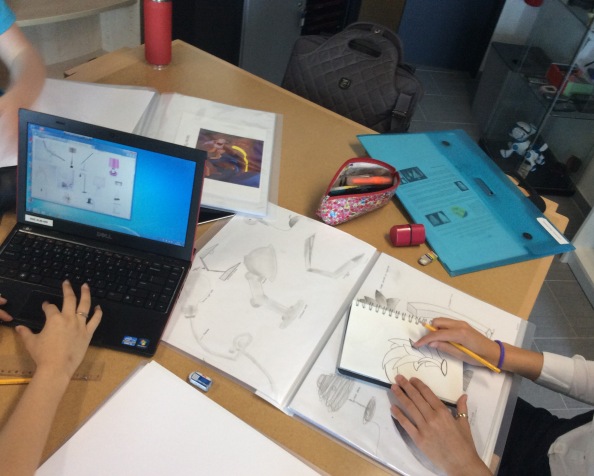My social media feeds have been buzzing in recent months with the word ‘Makerspace’ – being seen by many as the great new educational discovery. Thousands of primary (junior school) staff and secondary (high school) Design & Technology teachers must be pretty frustrated.
Designing and making has been at the core of education since the so called ‘Three R’s’ were spoken of. Reading, Writing and Wroughting as in to ‘wrought a wonderful design’. Hansard recorded this in 1800 and something.
Design and Technology has been in the UK curriculum for many years. Yes, it moved from simply practical skills in wood, metal, plastic and ‘hands on engineering’ through ‘Craft Design and Technology’ (CDT) and onto ‘Design and Technology’ (DT) and, for many (myself included) simply ‘Design’ where the amalgam of Art, Manufacture, History, Science, Languages and Business come together. About 30 years ago for me when I studied my four year B.Ed Honours degree in Design & Technology for education. Yes, I am proud of it.
In the USA ‘Workshop or ‘Shop’ has existed for eons too.
Basically, places where students can go and make stuff based on the backbone of designing and sketching (no CAD yet…), evaluating and testing and discovering has been a cornerstone of education for many years. In some countries being ‘academically able’ and ‘good with ones hands’ is seen as a fundamental dichotomy. What I’ve known since I was studying Design & Technology as a student in the mid 70’s at school is now seen as something new. Wake up call folks. It’s not. Far from it.
What has happened is that many so called academics are rapidly realising that an ability to simply rote learn and harbour knowledge is no longer the mainstay of education. The world needs folk who can do significantly more than that. A little knowledge applied well is better than loads of knowledge sitting inside a cranium waiting for the next quiz on TV or trivial pursuit amongst friends.
Makerspaces are doing what every primary teacher does with their kids. They play. They assemble. They create. They disassemble. They discover. They fail. They learn. Using Knex, Lego, pipe cleaners, lolly sticks, art straws and so on.
Makerspaces do what we do in Design (and technology) but arguably at a lower level with regard to material science, process and technique. In Design, the aim is to create and manufacture products using (as far as possible) industrial process and technique with manual skills and incorporating current technologies where possible. Designing starts on paper, evolves through modelling and prototyping with ongoing evaluation before arriving at a more developed idea for testing. 3D printing, CAD and CNC certainly comes into it (I used my first CNC router in a school in 1990 and 3D printing has been around for almost a decade in schools now if finances allowed).
Good schools have had workshops for many years (as they did sports fields…) but short sighted folk (academics?) made decisions that took them away. Now, because of the world need to supply folk who are creative, practical entrepreneurs we have the ‘Makerspace’ phenomenon. A place where a 3D printer on a trolley, some wipe clean ‘write-on’ desks and some plastic bins of Lego (and an iPad for coding work…) is seen as the saviour of modern day education.
It’s not. It’s a fad.
Governments are simply waking up to the fact that a subject that was seen as ‘not academic’ by many is now being seen as the vital saviour to our world economy because kids learning facts for exam success alone is simply not enough.
We need decent manufacturing spaces with lathes, milling machines, hoists, welding and heat treatment and plastic forming kit, sewing machines and food preparation areas, benching with tooling, design studios with paper and pencils for designing and theory (materials, business, languages…), cad suites and CNC equipment (yes, 3D printing etc.) for small prototype work so that students can understand the whole concept of taking an idea from concept to completion. We need assembly and disassembly lessons (recycling and re-purposing). We need liaison with industry too – schools need to outsource and bring expertise in).
In fact, what some good schools should (and many still do) still have – a Faculty of Creative and Entrepreneurial Studies that embraces Design, Technology and Art. Oh. That’s what I had at school. 30 years ago (3D printing aside….although we did have a plug mill and an injection moulding machine).
Makerspaces = Design (& Technology) departments. Full circle?
PS. We also now have STEM/STEAM thrown into the mix as well – a blog topic for another time….

